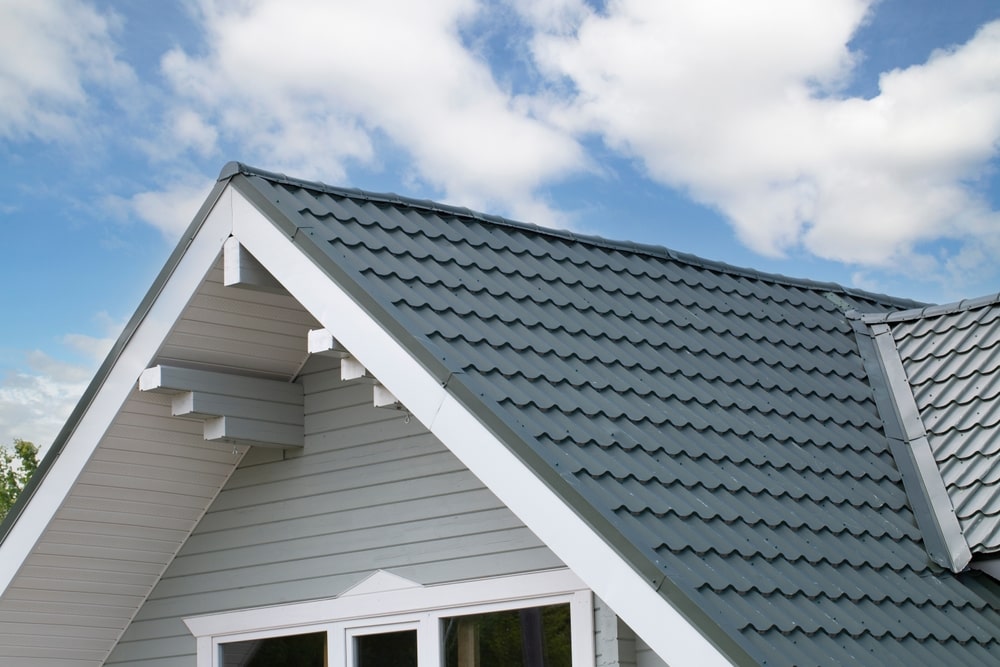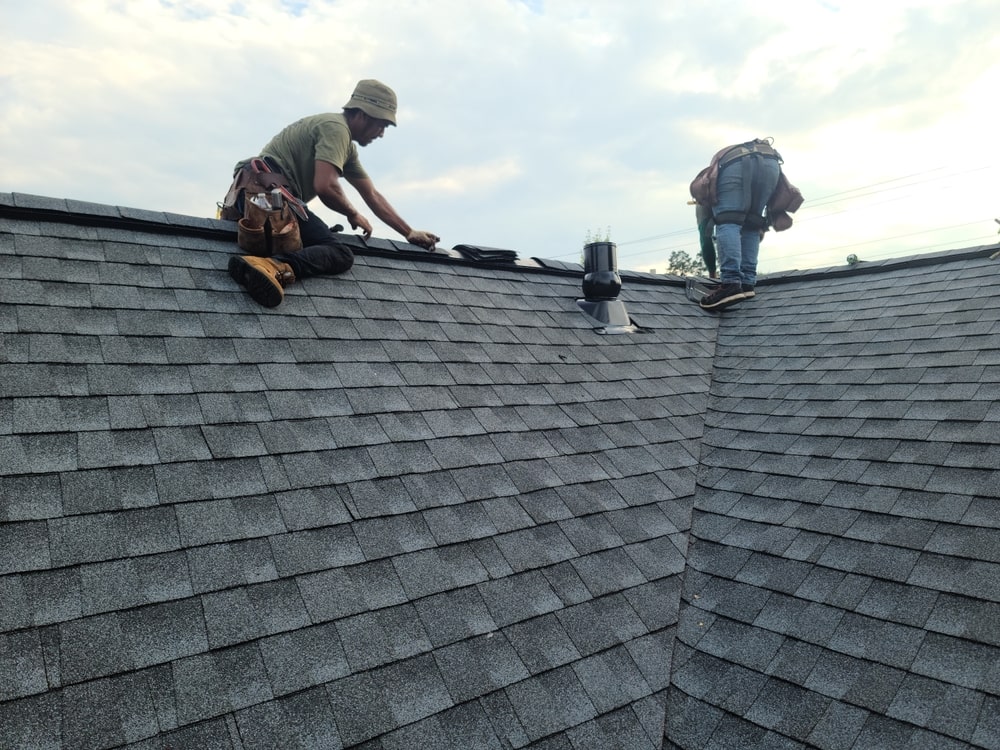When it comes to residential roofing, homeowners often face the critical decision of choosing between a metal roof and asphalt shingles. The debate of metal roofs vs shingles involves numerous factors—cost, durability, energy efficiency, and appearance. At Single Ply Roofing Experts, we understand that selecting the right roof is a major investment. This comprehensive guide will help you weigh the metal vs shingle roofing options, explore the metal roof vs shingles cost, and determine which is better suited for your home and climate.
Understanding Roofing Materials
Before diving into specifics, it’s essential to know what is the difference between metal roof and shingles.

Metal Roofing
Metal roofs are composed of materials like steel, aluminum, copper, or zinc. They come in various styles, including standing seam panels and metal shingles, offering a modern aesthetic and long-lasting performance.
Asphalt Shingles
Traditional asphalt shingles consist of a fiberglass base material coated with asphalt and topped with ceramic granules. They are widely used due to their affordability and ease of installation.

Metal Roofs vs Shingles Cost
Cost often plays a pivotal role in roofing decisions. Here’s a comparison of initial and long-term expenses.
Initial Installation Costs
- Metal Roofs: Typically range from $8 to $16 per square foot, depending on the type of metal panels used and labor costs.
- Asphalt Shingles: Generally cost between $3 to $6 per square foot, making them a more budget-friendly option initially.
Long-Term Value
- Metal Roofing: Offers a lifespan of 40–70 years with minimal maintenance, potentially reducing long-term expenses.
- Asphalt Shingles: Have a shorter lifespan of 15–30 years and may require more frequent replacement, leading to higher cumulative costs over time.
Durability and Climate Performance
Let’s evaluate the metal vs shingle roofing durability and maintenance needs.
Resistance to Extreme Weather Conditions
- Metal Roofs: Highly resistant to high winds, heavy snow, and fire, making them suitable for regions prone to extreme weather.
- Asphalt Shingles: While they can withstand moderate weather, they are more susceptible to damage from high winds and heavy snow.
Performance in Warm Climates
- Metal Roofs: Reflect solar heat, contributing to energy savings by keeping homes cooler in hot climates.
- Asphalt Shingles: Tend to absorb heat, which can increase cooling costs during warmer months.
Metal Roof vs Shingles in Hot Climate
Choosing the right roofing in hot climates can drastically impact your home’s energy use.
Performance in Heat
- Metal Roofs: Reflect solar radiation and keep homes cooler, reducing air conditioning use. Ideal for hot climates.
- Shingles: Tend to absorb heat, raising indoor temperatures and energy costs.
Ventilation and Insulation
Proper insulation and roof ventilation are critical. Metal roofs, when paired with reflective coatings, can enhance overall energy efficiency, especially in regions with high sun exposure.
Aesthetic Considerations
The visual appeal of your roof contributes to your home’s overall look.
- Metal Roofs: Offer a wider variety of styles and colors, including options that mimic wood shakes or slate, providing a modern or traditional appearance.
- Asphalt Shingles: Available in various colors and styles, offering a classic look that complements many home designs.
Environmental Impact
Considering the eco-friendliness of roofing materials is increasingly important.
- Metal Roofing: Often made from recycled materials and fully recyclable at the end of its lifespan, contributing to sustainability.
- Asphalt Shingles: Typically non-recyclable, leading to more waste in landfills and a higher environmental footprint.
Installation and Labor Considerations
The complexity and time involved in installing each roofing type can affect overall costs.
- Metal Roofs: Installation requires specialized skills and tools, potentially leading to higher labor costs.
- Asphalt Shingles: Easier and quicker to install, which can reduce labor expenses.
Insurance and Financial Considerations
Your choice of roofing material can influence insurance premiums and long-term financial planning.
- Metal Roofs: Their durability and fire resistance may lead to lower insurance premiums.
- Asphalt Shingles: While initially less expensive, their shorter lifespan and higher maintenance needs can result in increased costs over time.
Compatibility with Solar Panels
If you’re considering adding solar panels, the roofing material’s compatibility is a factor.
- Metal Roofs: Provide a sturdy and long-lasting base for solar panel installation.
- Asphalt Shingles: Can accommodate solar panels, but may require additional considerations due to their shorter lifespan.
Metal Roofs vs Shingles Pros and Cons
Pros of Metal Roofing
- Longevity and durability
- Energy efficiency
- Eco-friendly (recyclable materials)
- High resistance to severe weather
Cons of Metal Roofing
- Higher initial investment
- Can be noisy without proper insulation
- More complex installation
Pros of Shingles
- Lower upfront cost
- Simpler and quicker to install
- Wide availability
Cons of Shingles
- Shorter lifespan
- Higher maintenance
- Less environmentally friendly
What Is the Difference Between Metal Roof and Shingles?
The fundamental differences are in material, cost, lifespan, and energy performance:
- Material: Metal (steel, aluminum) vs. asphalt-fiberglass composite
- Lifespan: Metal (40–70 years) vs. Shingles (15–30 years)
- Efficiency: Metal reflects, shingles absorb heat
- Environmental: Metal is recyclable; shingles are not
| Feature | Metal Roof | Asphalt Shingles |
| Lifespan | 40–70 years | 15–30 years |
| Cost | Higher upfront | Lower initial |
| Durability | Excellent in extreme weather | Moderate, prone to damage |
| Maintenance | Low | Moderate to high |
| Energy Savings | High (reflects heat) | Low (absorbs heat) |
| Eco-Friendly | Recyclable | Not recyclable |
| Installation | Complex, skilled labor required | Simple, quick |
FAQs About Metal Roofs vs Shingles
WHAT IS THE DIFFERENCE BETWEEN METAL ROOF AND SHINGLES?
Answer: Metal roofs are made from materials like steel or aluminum, offering durability and energy efficiency. Asphalt shingles are composed of a fiberglass base with an asphalt coating, providing affordability and ease of installation.
WHICH ROOFING MATERIAL IS BETTER FOR HIGH WINDS?
Answer: Metal roofs are more resistant to high winds due to their interlocking panels and sturdy construction, making them a better option in wind-prone areas.
HOW DO METAL ROOFS PERFORM IN HEAVY SNOW?
Answer: Metal roofs shed snow efficiently, reducing the risk of ice dams and water damage, which are common issues with asphalt shingle roofs.
ARE METAL ROOFS MORE ENERGY-EFFICIENT THAN ASPHALT SHINGLES?
Answer: Yes, metal roofs reflect solar heat, leading to energy savings, especially in warm climates, whereas asphalt shingles tend to absorb heat.
DO METAL ROOFS REQUIRE MORE MAINTENANCE THAN SHINGLES?
Answer: No, metal roofs are low maintenance, requiring only periodic inspections, while asphalt shingles may need more frequent repairs and replacements.
Conclusion
In the debate of metal roofs vs shingles, both options have their merits. Metal roofing offers longevity, durability, and energy efficiency, making it a worthwhile investment for many homeowners. Asphalt shingles provide an affordable and traditional choice, suitable for those with budget constraints. At Single Ply Roofing Experts, we are committed to helping you select the best roofing solution tailored to your specific needs and preferences.
Ready to upgrade your roof? Contact Single Ply Roofing Experts today for a personalized consultation and discover which roofing material is the best fit for your home and business needs.

